
Our Favourite Low Light Houseplants
We are often told that houseplants need a really good amount of light to thrive, but that’s not always the case. There are several houseplants that actually prefer lower light levels and others that can happily adapt to shady corners. But what does low light actually mean? Well if your room has no windows (like a lot of bathrooms, basements or laundry rooms), then unfortunately this won’t be good for any plant as they need at least some light to photosynthesise. Low light often means north-facing rooms (if you’re in the northern hemisphere), or at the other side of the room to the window in brighter rooms.
If you’re not sure what light levels you have in your home, a light meter can be a great way to make sure your houseplants are getting the preferred amount of light.
Be mindful that light levels will change throughout the day and across the year so monitor the spots your houseplants are in and adjust across the seasons if needed. For example, in winter, not only is the sun out for less of the day, but it’s much weaker so it can be a good idea to place your plants nearer the window to maximise that sunlight.
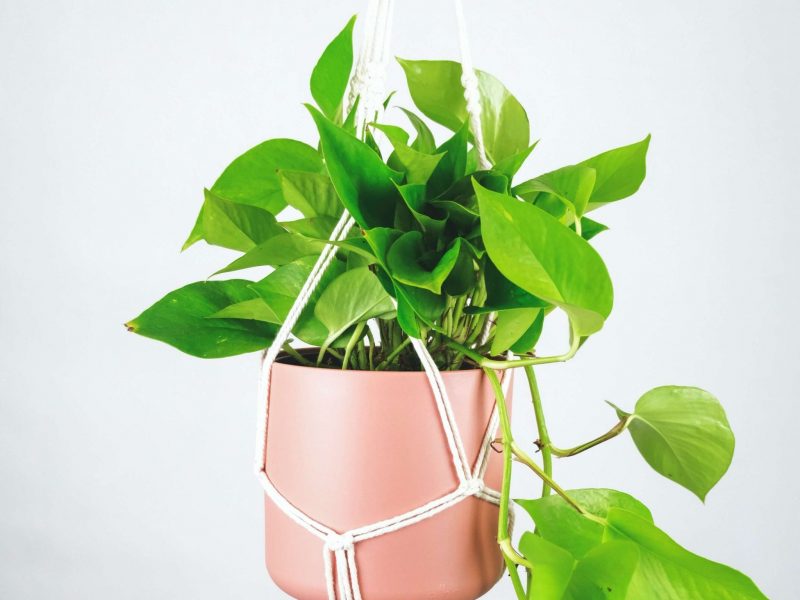
Devil's Ivy
Epipremnum aureum
These are pretty unique houseplants because they actually prefer lower-light conditions over anything else! That’s where the name comes from, as they are well acquainted with the darkness. If you have a variegated variety, it will actually start to lose its pattern on new leaves if placed in too much sunlight. So you don’t need to feel guilty about putting your Devil’s Ivy in a shady spot because it will actually love you for it.
They are also pretty hardy plants in terms of their other care requirements. They don’t need complicated watering schedules or specific pruning so are perfect for any new plant parents. You can’t really go wrong with these at all!
When it comes to styling the Devil’s Ivy plant, shelving is where they thrive as it gives it room to cascade dramatically out of the pot. They can be trained to grow upwards by a wall or moss pole so the option is yours.
Find out more in our Devil's Ivy care guide.
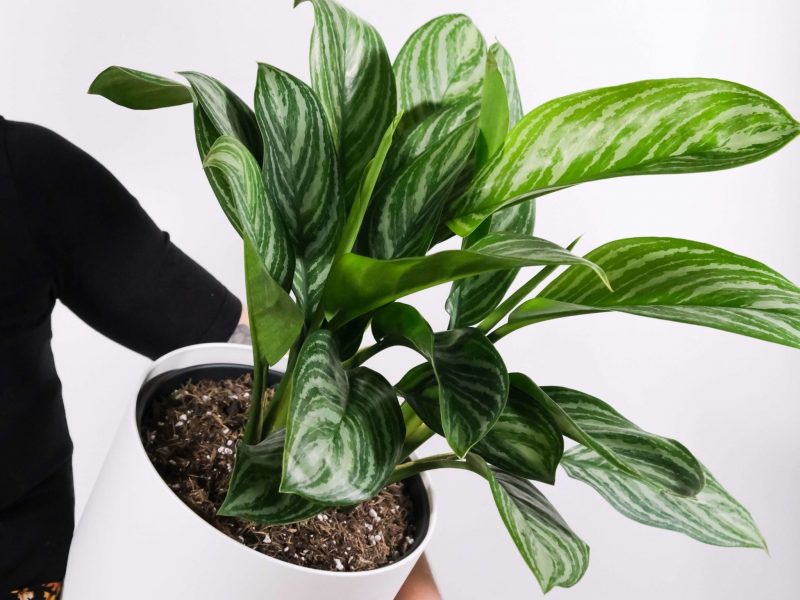
Chinese Evergreen
Aglaonema
If you find that you are often killing your houseplants and you can’t seem to figure out why, then the Chinese Evergreen is the one for you. Native to South-East Asia, they are so hardy that they’ll grow and thrive in basically any home so it’s the perfect low-light beginner plant.
Chinese Evergreens have incredible leaves, full of splashes of white, silver or pink depending on the particular variety. They are quite slow growing though (as most hardy plants are), so don’t expect a lot of new growth every year.
Find out more in our Chinese Evergreen care guide.
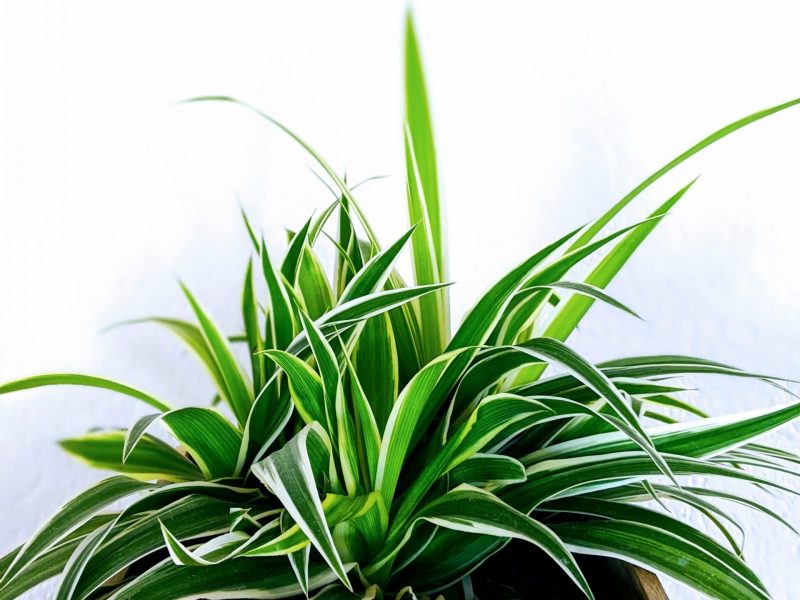
Spider Plant
Chlorophytum comosum
Spider Plants are the perfect plant for a houseplant beginner as they are super easy to care for, grow pretty quickly, and produce an abundance of spider babies which can be propagated in seconds.
The best thing about Spider Plants is that you would really have to try to kill them as they adapt to and survive in most environments and don’t mind being a little neglected. They even show you when they need more water by going quite light green. But after a little bit of water, they spring back to full health in minutes.
As your plant matures, you’ll start to see it sprouting little spiderettes which you can choose to remove from the plant to create new Spider Plants. In low light conditions, growth will be slightly slower and you might not see as many spiderettes growing but it doesn’t mean you won’t get any.
Find out more in our Spider Plant care guide.
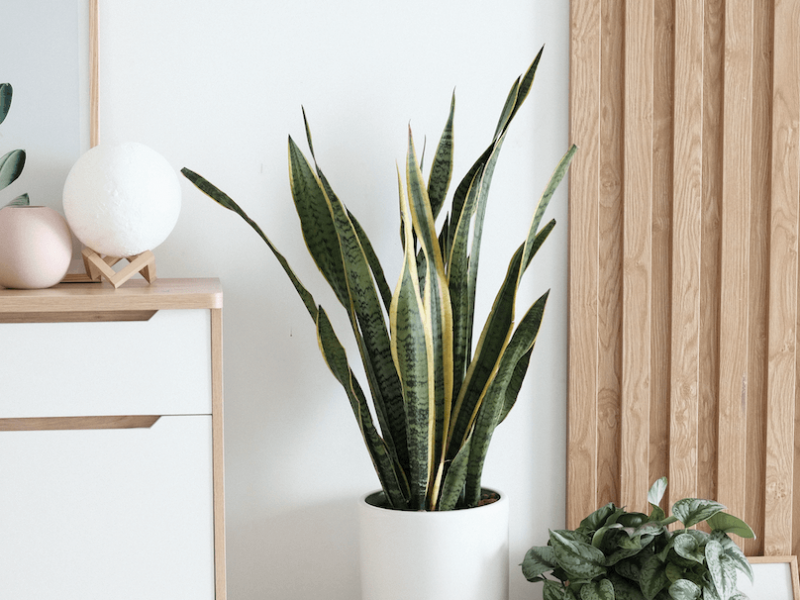
Snake Plant
Sansevieria Trifasciata
The bold and striking leaves of the Snake Plant make it stand out wherever you put it! Not only are they slow-growing, but they transcend upwards so are great for small spaces or that corner you never know what to do with. They have some of the sturdiest leaves or any houseplant, and their sharp leaf tips have given the plant the nickname of mother-in-laws-tongue!
When it comes to care, Snake Plant are super easy to look after, they can adapt to a range of light levels which make them great for low light areas, as well as bright windowsills. They prefer dry soil and don’t need much attention in the way of misting or repotting etc. So if you want a low maintenance, sturdy houseplant, then the Snake Plant is your perfect match!
Find out more in our Snake Plant care guide.
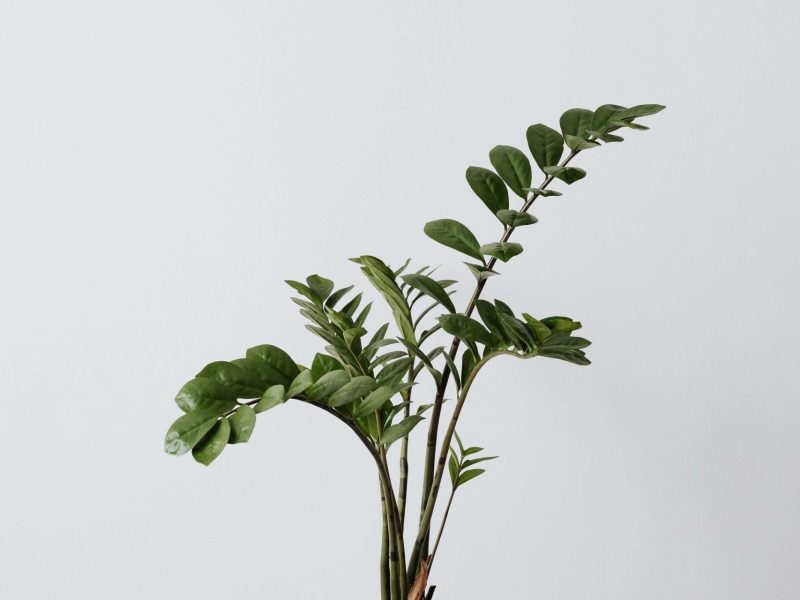
ZZ Plant
Zamioculcas zamiifolia
Also known as the Zanzibar Gem, the ZZ Plant is a great low-maintenance minimalist houseplant. Loved for their dark green glossy oval leaves, we recommend this one for those without a fantastic track record of keeping plants alive, but also for anyone looking for something smart and stylish to spruce up their home. They are very adaptable which is why they’ve made the cut for the top low light plants. Growth will be slow in shady spots but other than that, it’ll cope just fine.
The ZZ Plant is quite slow-growing so you won’t see new stems popping out all of the time. It’s important to note that they grow bulb-like roots called rhizomes so will need quite a large pot to really thrive and grow. This also means they are drought tolerant as they store water in their rhizomes.
Find out more in our ZZ Plant care guide.
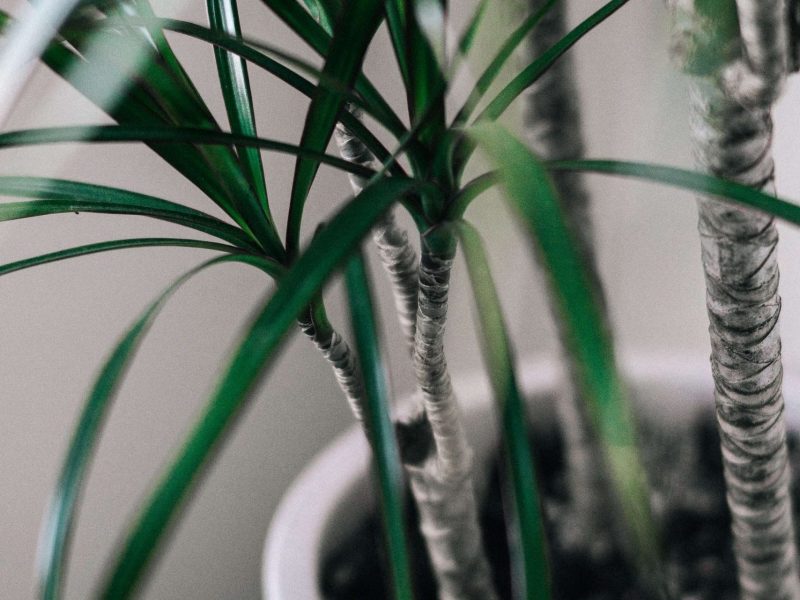
Dragon Tree
Dracaena draco
The Dragon Tree was actually our first ever houseplant and ignited our initial love for caring for indoor plants many years ago. Native to Madagascar, it’s a timeless plant that brings elegance and style to every room. They are also super easy to care for and are great at purifying the air which makes them the perfect entry-level houseplant.
You’ll have a hard time trying to kill a Dragon Tree as they are pretty drought-tolerant and forgiving when it comes to light, temperature levels and humidity so it’ll adapt well to every spot in your home.
Although they can reach up to 6 metres in their natural outdoor habitat, they’ll only ever get to about 1.5/2 metres when grown indoors (and even this will take years and years) so you don’t need to worry about it getting too big to handle.
Find out more in our Dragon Tree care guide.
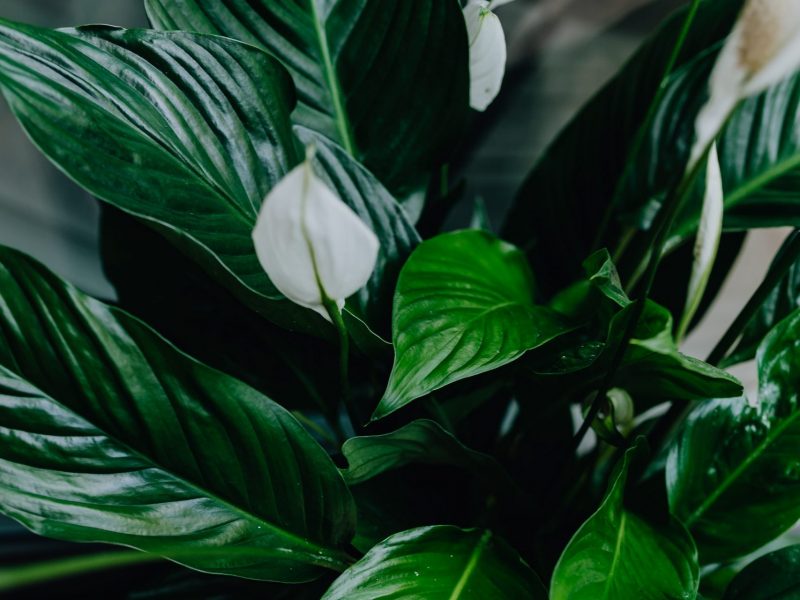
Peace Lily
Spathiphyllum wallisii
There’s a reason that Peace Lilies are so popular, and it’s not just because of their incredible white flowers. They are super low maintenance plants that can adapt and thrive in most homes. They can tolerate all light levels which is super rare for houseplants. When grown in lower light areas, you may see less flowering but a few should pop up every now and again.
Our favourite thing about the Peace Lily is that it really helps us plant parents out by drooping its leaves when it really needs water. This can help you spot underwatering before it’s really a problem. Within minutes of watering, the leaves will perk up – it’s pretty cool! And if we haven’t sold you on the Peace Lily yet, then you should probably know that they are also one of the best plants at purifying the air and removing chemicals from your home!
Find out more in our Peace Lily care guide.
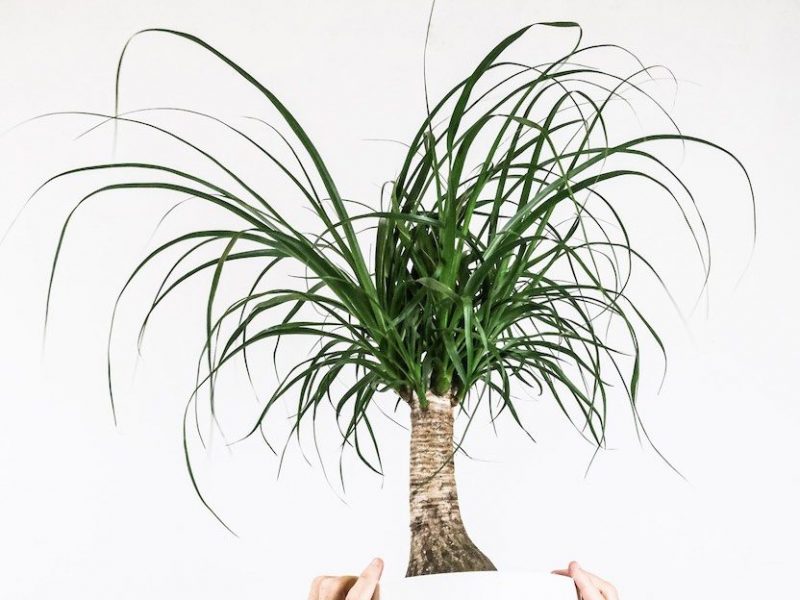
Ponytail Palm
Beaucarnea recurvata
This is a Palm with a personality! The Ponytail Palm is loved for its long curly leaves which instantly bring the tropical beach vibes…
Interestingly, the Ponytail Palm is neither a palm nor a tree, it’s actually a succulent which is why they are super low maintenance. They don’t need much water as they are able to store it in their trunk and they are really adaptable to light levels which make them perfect for shady corners as well as right next to large windows. The only drawback of the Ponytail Palm is that it’s quite slow-growing so don’t expect it to be constantly growing new leaves.
Find out more in our Ponytail Palm care guide.
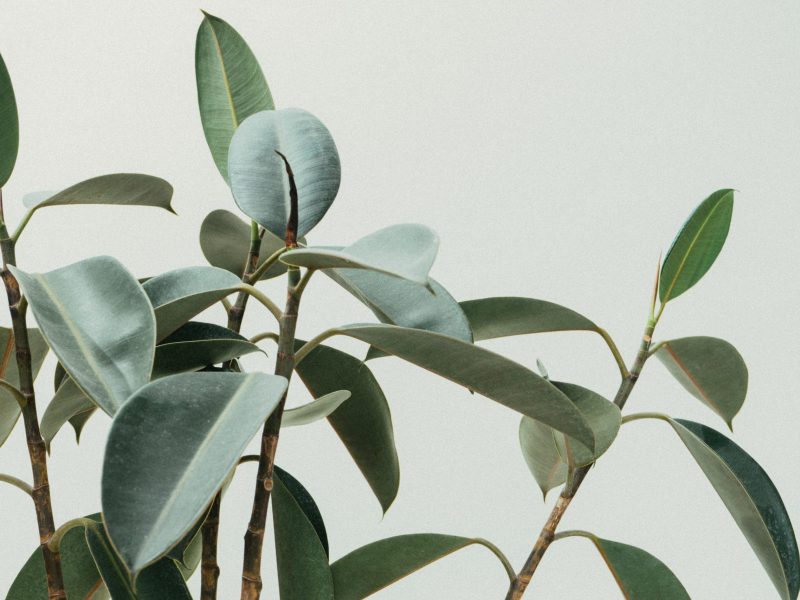
Rubber Plant
Ficus elastica
The name Rubber Plant comes from the latex in the leaves, which was once used to actually make rubber! They are a great plant to bring a little bit of that rainforest feel right into your home. And whilst they can reach about 30 metres in their native environment, when potted in your home they’ll be much smaller don’t worry!
Caring for your Rubber Plant doesn’t have to be difficult. Good light levels and not too much water are the basics to remember but they can grow well in low light too (just growth will be slower and sometimes slightly leggy). As they are native to Southern Asia, they love humidity and will really struggle with dry air so regularly misting will keep your plant happy and healthy.
Find out more in our Rubber Plant care guide.
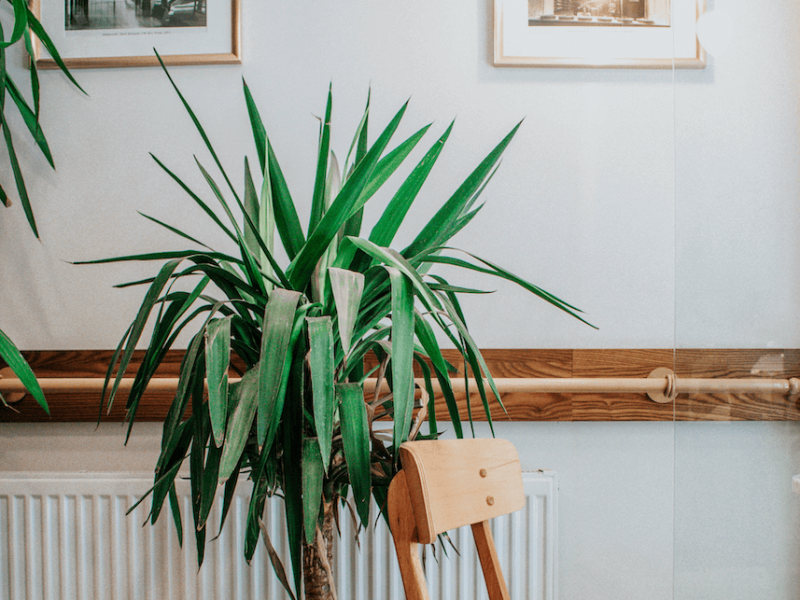
Yucca
Yucca elephantipes
A staple of many homes, the Yucca is one of the most popular houseplants and you’ll often see them around offices, shops and restaurants too! This is because they are super easy to care for so are perfect for all plant parents (even the forgetful waterers). They were very popular in the ’70s so are a great way to get a little bit of vintage style in your home.
As they mature, Yucca plants can grow about 2 metres in height so make it the perfect feature plant for your space. They are very slow-growing though so if you don’t have as much space, a smaller plant won’t outgrow the room very quickly.
They are very low maintenance and can adapt to most light levels, temperature and humidity levels but unfortunately, they are toxic to keep that in mind if you have pets or small children.
Find out more in our Yucca care guide.














